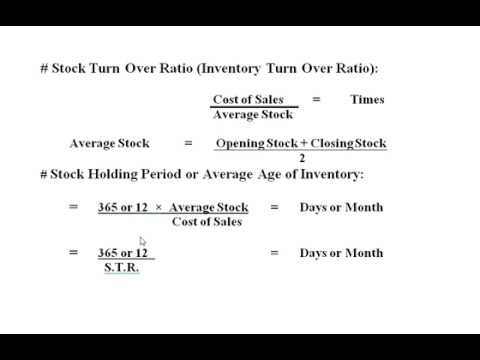Contents:


A unit of account; a medium of exchange; to pay for goods and services a store of value. A medium of exchange; a store of value; a unit of account; to facilitate deferred payments. As such, understanding the M3 money supply is crucial for policymakers, investors, and anyone interested in the health and stability of the economy. RBI publishes figures for four alternative measures of money supply, viz. However, the savings and current account deposits decreased by 8%.
However, in a money economy, all he need do is sell his wheat and use some of the proceeds to purchase meat. As such, money allows a wider range of transactions than would otherwise be possible. M3 is calculated by adding up all the components that make up the money supply in an economy.
What is the money supply?
M3 consisted of time deposits $100,000 and over, repurchase agreements larger than $100,000 and longer than one day , and institutional money market mutual fund accounts. Thus, the central banks use measures of the money supply to monitor and manage the economy, particularly in relation to inflation and overall economic growth. The choice of which measure to use depends on the specific goals of the central bank and the characteristics of the economy being measured. They use this information to monitor the overall health of the economy and make decisions about monetary policy. Money supply refers to the total amount of money that is circulating in a country’s economy at a given time. It includes all forms of money, such as cash, bank deposits, and other financial assets that can be used as a means of exchange.

M3 was traditionally used by economists to estimate the entire money supply within an economy and by governments to direct policy and control inflation over medium and long-term periods. However, the relatively weak money supply growth figures also suggest that quantitative easing was limited in its ability to stimulate bank lending and get money to the real economy. That’s why the Federal Reserve constricts the money supply when inflation rears its ugly head. The Fed is slowing down spending in order to control the rate of inflation. Another money supply number, M3, includes all of the above plus large institutional cash deposits.
Mark These Dates: Key Macro Data Scheduled in Final Week of 2022
As a measure of money supply, M3 has largely been replaced by money zero maturity . Also, level of savings is not increasing as people spend their disposable income. It suggests the economic recovery may still be quite tentative. Consumer confidence shows little sign of recovery, and the banking sector was still very weak. The negative M4 growth during 2011 and 2012 was a sign that economic activity was falling and unsurprisingly the economy went into a double-dip recession.
- Generally, the money stock rises as the economy gets bigger.
- From 1977, RBI has been publishing four monetary aggregates – M1, M2, M3 and M4 – besides the reserve money.
- In ancient times, it was some commodity that had intrinsic value, such as salt, silver or gold.
Why did CPI not jump as a result of QE, as the monetarist theory supposes? Because of the business downturn resulting from the scare stories published daily by the score. Buyers lengthened their term preference and sellers reduced prices to move stock off the shelves. At the same time, online retail had just started to get big, so big that without QE the CPI might have gone negative. Add in the Wal-Mart effect from the entry of aggressive cut-price brick-and-mortar retailers, which triggered a response from the Goliaths. It’s a complex situation that can’t easily be charted, but the monetarist theory of inflation is supported by case studies from many other countries than the UK.
The U.S. money supply is reported in two main categories, M1 and M2. This is the amount of money that the banks have available to lend out to businesses and individuals. The M3, the MO, and the MB are not separately represented in the Federal Reserve reports on money supply. In the U.S., the Federal Reserve tracks the money supply from month to month.
RBI MPC Minutes, FOMC Minutes Among Key Economic Events Ahead: Dates, Forecasts?
“The ClearIAS platform is highly user-friendly. It is quite easy to revise mock exams on the ClearIAS mobile app. The explanations are short, crisp and clear. A trusted mentor and pioneer in online training, Alex’s guidance, strategies, study-materials, and mock-exams have helped many aspirants to become IAS, IPS, and IFS officers. To distinguish new aggregates from old aggregates, RBI sometimes mentions new aggregates as NM0, NM1, NM2, and NM3. However, the Federal Reserve Bank of St. Louis and some other sources still publish M3 figures for economic data purposes. As of December 10, 2020, M3 for the United States was $18.81 trillion. M3 is still published as a source of economic data, but mostly for ease of historical comparisons.
Money Supply Definition: Types and How It Affects the Economy – Investopedia
Money Supply Definition: Types and How It Affects the Economy.
Posted: Sun, 12 Feb 2023 08:00:00 GMT [source]
A better understanding of what the “money supply” consists of may be gained by following its development over time. Money is a store of value, but for individuals only and not for the economy as a whole. Having a house worth one million dollars is equivalent to having one million dollars in a bank account. Moreover, the role of money as a store of value derives from its function as a unit of account. A unit of account is a measure that allows the comparison of value. Money functions as a medium of exchange; as a unit of account; as a store of value; and as a means of making payments inter-temporarily, i.e., over time.
What Happens When the Federal Reserve Limits the Money Supply?
Anincrease in the supply implies that people are spending more, which increases the demand for products and services in the economy. Therefore, the high circulation of money will lead to higher inflation rates. L1 – NM3 + All deposits with the post office savings banks . Very often, the money supply in the economy is represented using a monetary aggregate called ‘broad money’, also denoted as M3. To understand the money supply in the economy RBI uses monetary aggregates like M0, M1, M2, M3 etc.
Eurozone March M3 money supply +2.5% vs +2.4% y/y expected – ForexLive
Eurozone March M3 money supply +2.5% vs +2.4% y/y expected.
Posted: Tue, 02 May 2023 08:00:29 GMT [source]
Currency with the public is arrived at after deducting cash with banks from total currency in circulation. In making monetary policy choices, the Fed does not take M3 into account. Since 2006, the Federal Reserve has stopped keeping track of M3. Also, exclusive less liquid components of M3 did not appear to transmit additional economic information already captured by the more liquid components of M2.
For example, M2 and large time deposits are treated the same and aggregated without any adjustments. While this does create a simplified calculation, it assumes that each component of M3 affects the economy the same way, which is not the case in the actual economy. Narrow money growth has been less affected by the recession and has remained constant.
Why is the currency in circulation a liability to RBI or government?
It is also reported weekly and monthly by the Federal Reserve. M2 plays an essential role in any discussion about money supply because it often provides more comprehensive insights than M1 alone. Many economic activities include transactions between different types of accounts, which is only partially included in M1. From the earliest times, in most cultures, silver and gold in the form of coins were used as money. This historic use of silver and gold makes some argue that only silver and gold are “real” money. However, whether or not a thing is regarded as money depends on the function it performs rather than what it is.
Moreover, M3 includes assets that are less liquid and more difficult to use as a means of payment than other components of the money supply. These assets may have a limited impact on inflation since they may not be used as frequently in transactions as more liquid assets. Meanwhile, changes in the M3 money supply can have a significant impact on the economy. For example, an increase in the money supply can lead to lower interest rates, which can encourage borrowing and spending, and stimulate economic growth. Conversely, a decrease in the money supply can lead to higher interest rates, which can reduce borrowing and spending, and slow down economic growth. Both central and commercial banks are the main source of money supply in any economy.
A corollary to this was that a bank was only having to pay out part of the cash it held in its vaults. This allowed the bank to extend loans just as the goldsmiths did. To do so, a bank would record the transaction by opening a “bank account” for the amount of the loan. The borrower could then withdraw banknotes against the balance or make payments by way of check. In effect, the bank account had become a medium of exchange.
The expert who pioneered ‘quantitative easing’ has seen enough: Central banks are too powerful and they’re to blame for inflation – Fortune
The expert who pioneered ‘quantitative easing’ has seen enough: Central banks are too powerful and they’re to blame for inflation.
Posted: Mon, 20 Mar 2023 07:00:00 GMT [source]
UK economic growth has been positive since 2013, yet the broad money supply growth has not matched the economic recovery. C. M1 is made up of demand deposits and savings deposits held by the public. M1, M2, and M3 are different measures of the money supply, each with varying degrees of liquidity and components. Meanwhile, M3 encompasses all other categories of money, along with additional assets that are less liquid and not included in the other measures of the money supply. The money supply can be measured in various ways, including M1, M2, and M3, which represent different types of money and financial assets that are included in the overall measure. The word ‘net’ implies that only deposits of the public held by the banks are to be included in money supply.
Current information on M1 can be obtained from FRED – Federal Reserve Economic Data – from the Federal Reserve Bank of St. Louis. The first such notes issued under the authority of a European government were those issued by Stockholms Banco of Sweden in 1660. For example, until 1971, the U.S. dollar could be exchanged for gold, on demand. To a large extent, at this point, the money supply would have consisted of money issued by the government or a central bank, which is why it is sometimes referred to as central bank money. Although, currency in the U.S. today is not redeemable in gold, it is backed by the “full faith and credit” of the U.S. government.
- The important point isn’t the number but how the number is increasing or decreasing from month to month.
- Owners of these precious metals would leave them with goldsmiths, whose well-fortified premises and vaults promised greater security.
- Hence, customers will stop borrowing and have to cut down on spending.
- Quantitative easing involves the creation of electronic money by the Bank of England to purchase gilts from the financial sector.
- An increase in money supply can lead to a rise in consumer spending.
Central bank money – obligations of a central bank, including currency and central bank depository accounts. Money supply includes deposits generated in the banking system resulting from a multiplier effect of movement of currency in the banking system as well as other forms of liquid assets. However, since 2000, these relationships have become less predictable, reducing their reliability as a guide for monetary policy. Although money supply measures are still widely used, they are among a number of economic measures that economists and the Federal Reserve collect, track, and review. The money supply is the total amount of cash and cash equivalents such as savings accounts that is circulating in an economy at a given point in time. However, prolonged periods of reduced supply are also equally harmful.
If customers give up spending altogether, the economy will become stagnant, leading to mass unemployment. Therefore, the government will introduce an expansionary monetary policy, where the interest rates on borrowing will be decreased. Central banks also inject additional money into the economy. Central bank money – obligations of a central bank, including currency and central bank depository accounts. From 1977 to 1998, RBI used four monetary aggregates – M1, M2, M3 and M4 – to measure money supply. Since 2006, M3 is no longer tracked by the U.S. central bank, the Federal Reserve.

Historically, measuring the money supply has shown that there are relationships between money supply and inflation and between money supply and price levels. Change in the money supply has long been considered to be a key factor in driving economic performance and business cycles. Macroeconomic schools of thought that focus heavily on the role of money supply include Irving Fisher’s Quantity Theory of Money, Monetarism, and Austrian Business Cycle Theory. It adds or removes cash from the system by changing the amount of money that flows to banks for use in loans to businesses and consumers. The Fed also influences the money supply, through actions that increase or decrease the amount of cash in the system.
This means that the money the public hold in hand or in the bank is a debt guaranteed by the government . The currency thus represents a ‘public debt’ owed by the government to the holders of the banknotes – the public. The money supply is the total stock of money circulating in an economy.
M2 and M4 money supply m3 includes also include Post-Office deposits as well. Governments issue paper currency and coins through their central banks or treasuries, or a combination of both. In order to keep the economy stable, banking regulators increase or reduce the available money supply through policy changes and regulatory decisions.
And since it was not opened to record a deposit of cash or gold, it was actually new money. The money supply now consisted of coin, banknotes and bank accounts. However, unlike the coin and banknotes, bank accounts were entirely a creation of the commercial banks. The stock of money in the economy – the money stock – changes from moment to moment, as money is created or destroyed. The aggregates – MB, M1, and M2 – go up or down as their components are increased or reduced.